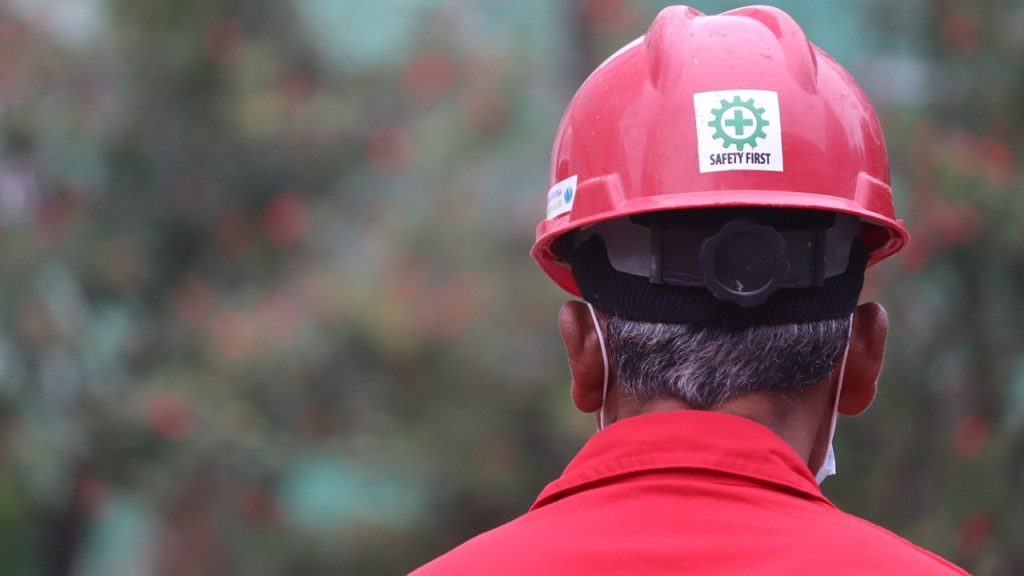Shipyard facilities play a vital role in the success of any offshore and marine services company in the Philippines. From the construction of new vessels to the repair and maintenance of existing ones, these facilities serve as the backbone of the industry. With cutting-edge technology, state-of-the-art equipment, and a skilled workforce, shipyards are not only responsible for ensuring the seaworthiness of ships but also for creating innovative solutions to meet the ever-evolving needs of this dynamic sector. In this article, we will explore some essential shipyard facilities in the Philippines that enable offshore and marine services companies to thrive in an increasingly competitive global market.
Click here to view our state-of-the-art shipyard facilities in Tanza, Cavite, Philippines.
Overview of Proper Shipyard Facilities: What You Should Look For
When it comes to shipyard facilities in the Philippines, there are a few key factors that you should consider before choosing the right one for your needs. First and foremost, safety should be at the top of your list. Look for facilities that have a strong safety record and follow all necessary protocols to ensure the well-being of both workers and vessels.
Secondly, efficiency is crucial in shipyard operations in the Philippines. Look for shipyard facilities that are equipped with state-of-the-art equipment and technologies to streamline processes and maximize productivity. A well-organized layout is also important to minimize downtime and optimize workflow.
Lastly, don’t forget about environmental sustainability. Shipyards should prioritize eco-friendly practices by implementing measures to reduce waste generation, conserve energy, and minimize pollution. Choosing a facility that is committed to sustainable practices will not only benefit the environment but also enhance its overall reputation.
When searching for shipyard facilities in the Philippines, keep safety, efficiency, and environmental sustainability as top priorities. By selecting a facility that excels in these areas, you can ensure smooth operations while minimizing risks and promoting an eco-friendly approach—an ideal combination that will ultimately contribute to your success as well as safeguarding our oceans.
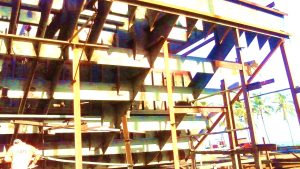
Overview of the Offshore and Marine Services Industry
The offshore and marine services industry is a crucial sector in the global economy, contributing to various sectors like oil and gas exploration, offshore wind energy, and transportation. As the demand for energy continues to rise and new offshore projects are developed around the world, shipyard facilities in countries like the Philippines have become essential players in this industry. With their strategic location and skilled workforce, these shipyards offer a range of services, including ship repair, maintenance, conversion, fabrication of offshore structures, and construction of support vessels.
One significant advantage of shipyard facilities in the Philippines is their cost-efficiency compared to other countries. The lower labor costs combined with quality workmanship make them highly attractive to international clients seeking affordable yet high-quality services. Furthermore, these shipyards take pride in adhering to international standards and certifications, such as ISO 9001 for quality management systems and ISO 14001 for environmental management systems. This commitment not only ensures customer satisfaction but also promotes sustainability within the industry.
In recent years, there has been an increase in demand for more sophisticated shipbuilding capabilities from Philippine shipyards. With advancements in technology, these shipyard facilities have adapted by investing heavily in infrastructure upgrades and acquiring state-of-the-art equipment necessary for complex projects such as ultra-large container ships or specialized vessels used in offshore wind farms. This shift towards higher-value projects has allowed Philippine shipyard facilities to position themselves as key players not only within Southeast Asia but on a global scale as well.
Essential Shipyard Facilities:
Here are the top 11 essential shipyard facilities that you need to consider before embarking on a shipbuilding or repair project in the Philippines:
1. Dry Docks: Shipyard Facilities Essential for Vessel Repairs
Dry docks are one of the most vital shipyard facilities in any dockyard in the Philippines, as they provide a controlled and protected environment for vessel repairs. These structures, essentially giant tanks that can be flooded with water to accommodate ships, allow for inspections, maintenance, and repairs to be conducted efficiently.
One key advantage of dry docks is their ability to handle a wide range of vessels simultaneously. By effectively controlling the water level inside the dock, different ships can be accommodated at various heights, allowing multiple projects to be carried out concurrently. This saves valuable time and resources, as each vessel can receive the attention it needs without having to wait for others.
Additionally, dry docks aid in ensuring the safety of Filipino workers during repair operations. By providing a stable platform on which work can take place, it eliminates concerns related to unpredictable weather conditions or rough sea waters. This significantly reduces the risk of accidents or injuries while enabling technicians and engineers to focus solely on their tasks without distractions or disruptions.
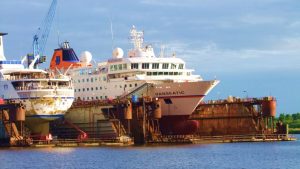
2. Slipways: Shipyard Facilities Used for Launching and Docking Vessels
Slipways are crucial shipyard facilities in Metro Manila, Batangas, Navotas, Cebu, or Cavite, serving as the gateway for vessels to enter or leave the water. These incline tracks provide efficient ways for launching and docking ships, making them an essential component of offshore and marine services companies. However, slipways are not just a simple platform; they require careful engineering and design considerations.
One key factor in slipway design is its capacity to handle different types of vessels. Ships come in various shapes and sizes, so slipways must be adjustable to accommodate these variations. Additionally, the location of the slipways within the shipyard is vital for optimizing workflow and minimizing disruptions during vessel movements.
While slipways primarily serve as functional structures, their aesthetic value should not be overlooked. Incorporating attractive designs into these launch-and-docking platforms can enhance the overall visual appeal of the shipyard, leaving a remarkable impression on visitors and clients alike.
Slipways play a pivotal role in ensuring smooth operations within shipyards by providing efficient pathways for launching and docking vessels. With careful attention to design and functionality considerations, these structures contribute not only to operational efficiency but also add aesthetic value to maritime complexes.

3. Berths or Quaysides: Shipyard Facilities Provide Mooring Space for Ships
Berths or quaysides are crucial shipyard facilities that provide mooring space for ships in Luzon, Visayas, and Mindanao. These dedicated areas ensure that vessels can safely dock and undergo necessary maintenance, repairs, or loading/unloading of cargo. Beyond their functional role, berths and quaysides also play a significant role in the overall efficiency and productivity of offshore and marine services companies.
One key aspect to consider when it comes to berths is their size and capacity. Different types of vessels require different mooring spaces, so having a variety of berth sizes available at a shipyard in Cavite, Metro Manila, or Zambales is essential. This allows the company to accommodate various types of ships, from small boats to large ocean liners or even offshore drilling rigs.
Furthermore, in today’s fast-paced maritime industry, time is money. Having strategically positioned quaysides can make all the difference in ensuring quick turnaround times for ships. By minimizing waiting times for vessels seeking docking spaces, offshore and marine services companies like Amaya Drydock & Marine Services Inc. can enhance their reputation as efficient service providers while maximizing their own operational capabilities.
Berths or quaysides provide not only physical space for ships but also act as critical components in optimizing operations within an offshore and marine services company. Efficiently managing these mooring spaces by considering size requirements and strategic positioning can contribute significantly to the smooth running of a shipyard facility and ultimately lead to higher customer satisfaction levels in this dynamic industry.
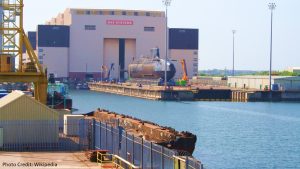
4. Workshops: Shipyard Facilities Equipped with Specialized Tools and Equipment
Workshops are a crucial component of any offshore and marine services company in Cavite, Manila, Navotas, or Cebu. These specialized spaces are equipped with state-of-the-art tools and equipment that allow for efficient repairs, maintenance, and fabrication of ship components. Whether it’s welding machinery or machining tools, workshops provide the necessary resources to ensure that ships are in optimal condition.
With advances in technology, workshops have become increasingly advanced and versatile. They are now equipped with modern machinery, such as 3D printers, that can produce intricate parts with precision. This not only saves time but also reduces costs by eliminating the need to source components from external suppliers.
Moreover, dockyard workshops in the Philippines play a vital role in promoting innovation within the industry. Filipino companies invest in research and development facilities within their workshops to encourage creative problem-solving and develop new technologies for better performance at sea. By providing a space dedicated to exploration and experimentation, these shipyard facilities foster collaboration between engineers, technicians, and naval architects – ultimately pushing the boundaries of what is possible in offshore engineering. The shift towards more technologically-equipped workshops has revolutionized the industry by increasing efficiency, improving performance, and expanding possibilities for offshore projects.

5. Fabrication Yards: Shipyard Facilities for Construction of New Vessels
Fabrication yards play a crucial role in the construction of new vessels for the offshore and marine industries. These yards are specialized shipyard facilities equipped with advanced technology and a skilled workforce to fabricate various components needed for building ships. From hull fabrication to outfitting, these yards ensure that every aspect of vessel construction is carefully executed.
One key advantage of fabrication yards is their ability to handle large-scale projects efficiently. With extensive shop floor space and heavy lifting equipment, these yards can accommodate the construction of massive vessels such as drillships and FPSOs. This allows for streamlined operations, reducing turnaround time and increasing productivity.
Moreover, fabrication yards also enable better quality control as they provide a controlled environment for construction activities. By working indoors, away from external elements like weather conditions, fabricators can ensure the integrity of each component being built. This results in higher precision and accuracy during assembly, ultimately leading to safer and more reliable vessels.
Fabrication yards are indispensable assets in the shipbuilding process. Their well-equipped shipyard facilities, combined with skilled manpower, contribute significantly to the timely delivery of high-quality vessels that meet stringent industry standards.

6. Warehouses: Shipyard Facilities for Storage of Equipment and Supplies
Warehouses play a crucial role in the smooth functioning of an offshore and marine services company. These large storage facilities are responsible for housing a wide range of equipment and supplies necessary for the regular operations of the company. From heavy machinery and tools to spare parts and consumables, warehouses provide a secure and organized space where all essential items are stored.
One key advantage of having warehouses in an offshore and marine services company in the Philippines is that it ensures the timely availability of equipment and supplies. With proper inventory management systems in place, companies can track their stock levels, anticipate demand, and ensure that everything is readily accessible when needed. This not only eliminates delays in project execution but also minimizes downtime due to equipment shortages or breakdowns.
Moreover, warehouses also allow companies to take advantage of bulk purchasing opportunities by providing ample space for storing larger quantities of supplies at once. This can result in significant cost savings as companies can negotiate better prices with suppliers when buying in bulk. Additionally, having centralized storage facilities allows for efficient coordination between different departments within the company, ensuring seamless distribution of goods whenever required.
Warehouses are an indispensable component of an offshore and marine services company’s infrastructure. From efficient inventory management to cost savings through bulk purchasing, these large storage spaces not only streamline operations but also enhance overall productivity by facilitating easy access to essential equipment and supplies.

7. Engineering Offices: Shipyard Facilities Where Design and Engineering Work Takes Place
Engineering offices are the nerve center of any offshore and marine services company. It is in these spaces that design and engineering work takes place, transforming ideas into tangible plans. These offices are usually equipped with advanced computer-aided design (CAD) software, allowing engineers to create intricate designs and simulations before they are executed on-site.
One unique aspect of engineering offices is their collaborative nature. Engineers often work together in teams, bouncing ideas off one another and pooling their expertise to find innovative solutions. This collaborative environment fosters creativity and ensures that projects benefit from a range of perspectives. Moreover, these offices often serve as meeting points for different departments within the company, facilitating cross-functional discussions and enabling effective project management.
In addition to being hubs of technical innovation, engineering offices also uphold stringent safety standards. Safety codes govern every aspect of a project’s execution, from the materials used to the systems installed on ships or offshore structures. Therefore, ensuring compliance with safety regulations is the primary responsibility of engineers working in these spaces. They carefully review designs for potential hazards and devise measures to mitigate them before implementation.
Engineering offices provide an essential workspace where professionals combine theoretical knowledge with practical skills to bring complex marine projects to life. Their role in planning, designing, and regulating construction activities cannot be overstated in an industry characterized by high stakes and rigorous standards.

8. Testing Facilities: Shipyard Facilities for Conducting Quality Control Tests on Vessels and Equipment
Testing facilities are a crucial component of any offshore and marine services company. These facilities provide the means to conduct quality control tests on vessels and equipment, ensuring their reliability and safety in demanding offshore environments. From destructive testing to non-destructive techniques, these facilities employ a range of approaches to thoroughly evaluate the structural integrity and performance capabilities of different components.
One such technique used in testing facilities is ultrasonic testing (UT), which utilizes high-frequency sound waves to detect hidden defects or anomalies within materials. This method is particularly valuable for assessing the thickness and integrity of welds, as well as identifying potential flaws that may compromise the functionality of critical equipment. By employing advanced UT technology, testing facilities can detect even minute defects, providing an added layer of reassurance in terms of product quality.
Another key aspect of testing shipyard facilities is fatigue testing, which involves subjecting materials or structures to repeated stresses over extended periods. This simulation helps determine how vessels and equipment will perform under real-world conditions, taking into account factors like corrosion, fluctuating loads, and exposure to harsh environments. By subjecting products to rigorous fatigue tests before deployment, marine services companies can ensure that their assets are built to withstand the challenging conditions they will encounter at sea.
Testing shipyard facilities play a vital role in maintaining high standards of quality control for vessels and equipment in the offshore industry. They employ various innovative techniques like ultrasonic testing and fatigue simulation to enhance product reliability while considering real-world operating scenarios.
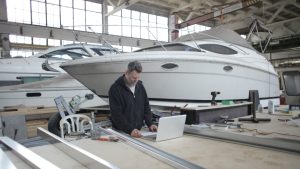
9. Training Centers: Shipyard Facilities to Provide Specialized Training for Workers
Training centers are an integral part of any offshore and marine services company. These centers serve as a hub for providing specialized training to shipyard workers, equipping them with the necessary skills and knowledge to excel in their roles. But beyond just preparing workers for their current jobs, these shipyard facilities also play a pivotal role in ensuring the future success of the industry.
One key aspect that sets training centers apart is their ability to adapt to the ever-changing needs of the offshore and marine services sectors. As technology advances and new challenges emerge, these centers must stay at the forefront of innovation, continuously updating their programs to reflect current industry trends. This not only ensures that workers are equipped with cutting-edge skills but also enables companies to remain competitive in a rapidly evolving marketplace.
Furthermore, training centers have become crucial in attracting talent from diverse backgrounds into the shipbuilding industry. By offering specialized training programs, they open doors for individuals who may have little prior experience but possess a strong desire to contribute in this field. With these opportunities readily available, more individuals can enter shipyards and pursue careers that provide stability, growth, and meaningful work.
Training centers are vital components of any offshore and marine services company. They not only provide specialized training for shipyard workers but also contribute to industry growth by adapting to changing demands and attracting new talent. As technology continues to shape this sector’s landscape, investing in comprehensive training becomes increasingly important for both individual career development and overall organizational success.
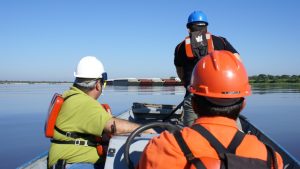
10. Accommodation Shipyard Facilities: To House Employees Working on Long-term Projects
Shipyard facilities such as accommodation play a crucial role in the operations of an offshore and marine services company, especially when it comes to housing employees working on long-term projects. These projects often require employees to be stationed at remote locations for extended periods, making comfortable and convenient accommodations a necessity.
Providing suitable accommodation not only ensures the well-being and satisfaction of the employees but also contributes to their productivity. A comfortable living space allows employees to rest and recharge after demanding work hours, reducing fatigue and improving overall performance. Moreover, having on-site accommodation helps companies streamline logistics and reduce travel costs by eliminating the need for employees to commute daily from off-site locations.
Creating attractive shipyard facilities, such as convenient accommodations, can also serve as a competitive advantage for offshore and marine services companies. Companies that prioritize providing high-quality, modern accommodations can attract top talent, showcasing their commitment to employee welfare. On top of that, well-designed living spaces that offer recreational areas or amenities such as gyms or communal spaces foster a sense of community among employees working together on long-term projects.
Accommodation shipyard facilities are no longer merely places where employees sleep after a day’s work; they have become integral components in ensuring workforce retention and enhancing employee performance. By investing in comfortable accommodations with added amenities, offshore and marine services companies can provide their employees with an optimal environment conducive to both work efficiency and personal well-being.
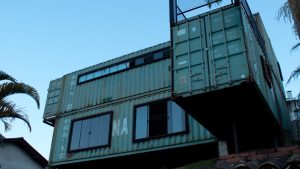
11. Lifting Systems (Airbags or Cranes): Proper Lifting Systems for Various Vessels
When it comes to lifting systems in shipyards, two common choices are airbags and cranes. Rubber airbags offer a cost-effective and efficient solution for lifting smaller vessels, such as tugboats or LCT barges. These flexible and buoyant bags can be strategically placed under the vessel, inflated with compressed air, and used to lift it out of the water. The advantage of airbags is that they distribute pressure evenly, ensuring a secure lift without damaging the hull.
On the other hand, cranes are essential for handling larger vessels like oil tankers or cargo ships. With their immense strength and versatility, cranes can easily lift heavy loads and maneuver them around the shipyard. Modern cranes come equipped with advanced technology, such as hydraulic systems and computerized controls, allowing operators to precisely position vessels during lifting operations. Additionally, cranes often have different attachments, such as spreader bars or hook blocks, to accommodate various types of vessels.
It is important for shipyards to have proper lifting systems in place for all types of vessels they handle. Whether it’s using airbags for smaller crafts or relying on cranes for bigger ships, selecting the right system ensures efficient operations while safeguarding against any potential damage or accidents. By utilizing these lifting systems effectively, shipyards can improve productivity and enhance safety standards within their shipyard facilities.
Ultimately, carefully choosing between airbag or crane lifts based on vessel size will lead to more successful projects overall within offshore marine services companies like ADMSI.
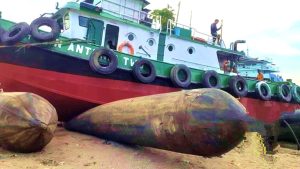
Looking for the Best Shipbuilding and Ship Repair Company in the Philippines with Proper Shipyard Facilities?
When it comes to shipbuilding and ship repair, finding the best company with proper shipyard facilities is crucial. Not only do you want a trustworthy and experienced team handling your vessel, but also a state-of-the-art facility that can handle the size and scope of your project. Look no further than Amaya Dockyard & Marine Services Inc. (ADMSI) in Cavite, Philippines.
- Email us: info@amayadockyard.com
- Call our 24-hour hotline: +63 917 633 0479
- Viber: +63 917 633 0479
- WhatsApp: +63 917 633 0479
- Facebook Messenger: Click here
- Click here to inquire
ADMSI stands out among its competitors due to its world-class shipyard facilities. Equipped with modern infrastructure and cutting-edge technology, they have everything needed to ensure a successful outcome for any offshore or marine services project. Their facilities include dry docks capable of accommodating large vessels, slipways for safe and efficient launching and docking processes, fully equipped workshops for repairs and maintenance, as well as ample storage space for spare parts. This level of comprehensive infrastructure sets ADMSI apart from other companies in the industry and makes them an ideal choice for any shipbuilding or repair needs.
Additionally, ADMSI’s commitment to quality extends beyond its physical facilities. They prioritize safety at every stage of their operations and follow strict guidelines to promote environmentally friendly practices in their shipyard activities. This dedication is not only commendable but also essential when selecting a partner for your maritime projects.
If you’re searching for the best shipbuilding and ship repair company in the Philippines with proper shipyard facilities, look no further than Amaya Dockyard & Marine Services Inc.
Summing Up: Shipyard Facilities of an Offshore and Marine Services Company in the Philippines
In conclusion, the Philippines is home to some of the most essential shipyard facilities for offshore and marine services. These facilities offer a wide range of services, from shipbuilding and repair to fabrication and maintenance. With state-of-the-art equipment and a highly skilled workforce, these shipyards are well-equipped to meet the needs of local and international clients. The strategic location of the Philippines in Southeast Asia also makes it an ideal hub for maritime activities. As the offshore and marine industries continue to grow, investing in these shipyard facilities will be crucial to supporting the development of this sector in the Philippines.
Embark on a voyage through the impressive shipyard facilities of a renowned offshore and marine services company in the Philippines. Experience maritime excellence with ADMSI.



